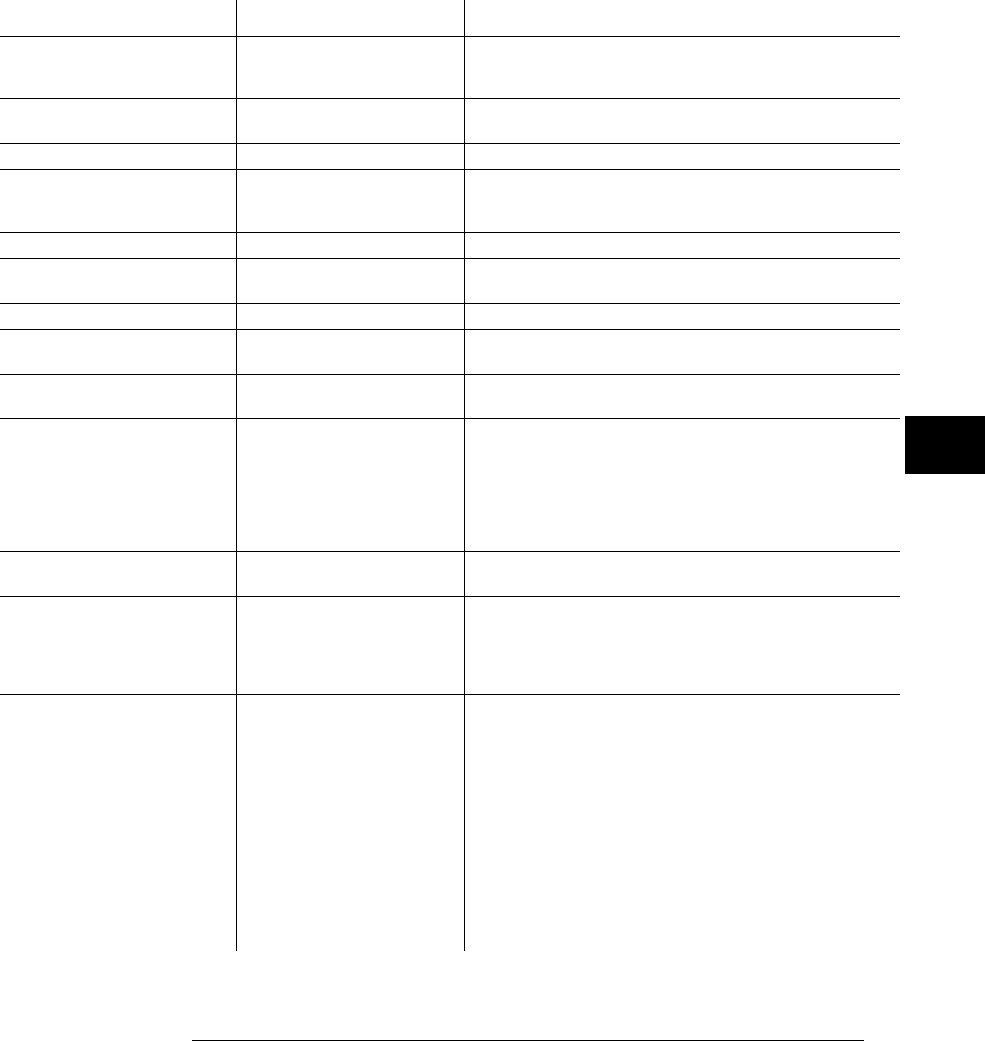Programming instructions
Table Of Contents
- Contents
- Title Page
- Chapter 1 Introduction to Programming
- Chapter 2 Programming Getting Started
- Chapter 3 Programming over HP-IB
- Chapter 4 Programming over RS-232-C
- Chapter 5 Programming and Documentation Conventions
- Chapter 6 Status Reporting
- Figure 6-1. Status Reporting Overview Block Diagram
- Table 6-1. Status Reporting Bit Definition
- Status Reporting Data Structures
- Status Byte Register (SBR)
- Service Request Enable Register (SRER)
- Trigger Event Register (TRG)
- Standard Event Status Register (SESR)
- Standard Event Status Enable Register (SESER)
- User Event Register (UER)
- Local Event Register (LCL)
- Operation Status Register (OPR)
- Limit Test Event Register (LTER)
- Mask Test Event Register (MTER)
- Histogram Event Register (HER)
- Arm Event Register (ARM)
- Error Queue
- Output Queue
- Message Queue
- Key Queue
- Clearing Registers and Queues
- Figure 6-3. Status Reporting Decision Chart
- Chapter 7 Installing and Using the Programmer's Reference
- Chapter 8 Programmer’s Quick Reference
- Warranty
- Index

Command Query Options and Query Returns
:TRIGger:TV:TVMode
<mode>
:TRIGger:TV:TVMode? <mode> ::= {LINE | FIELD1 | FIELD2 | VERTical}
{LINE | FIELD1 | FIELD2 | VERTical | ALLLINES | ALLFLDS}
with the Option 005 Enhanced TV/Video Trigger
:TRIGger:TV:VIR
{ON | OFF}
:TRIGger:TV:VIR? {ON | OFF}
*TRG n/a n/a
n/a *TST? <result> ::= 0 or non-zero value; an integer in NR1 format
0 indicates the test passed.
Non-zero indicates the test failed.
VAUToscale n/a n/a
:VIEW
<source text>
n/a <source text> ::= {ANALog1 | ANALog2 | DIGital0,...,DIGital15 |
PMEMory1 | PMEMory2}
*WAI n/a n/a
:WAVeform:BYTeorder
<value>
:WAVeform:BYTeorder? <value> ::= {LSBFirst | MSBFirst}
:WAVeform:COUNt
<count_argument>
:WAVeform:COUNt? <count_argument> ::= {1|4|8|16|32|64|128|256}
n/a :WAVeform:DATA? <binary block length bytes>, <binary data>
For example, to transmit 4000 bytes of data, the syntax would be:
#800004000<4000 bytes of data><NL>
8 is the number of digits that follow
00004000 is the number of bytes to be transmitted
<4000 bytes of data> is the actual data
:WAVeform:FORMat
<value>
:WAVeform:FORMat? <value> ::= {WORD | BYTE}
:WAVeform:POINts
<mode> [,<#points>]
:WAVeform:POINts? <mode> ::= {NORMal | ALL}
If <mode> ::= NORMal, <#points> ::=
{100|200|250|400|500|800|1000|2000|4000}
If <mode> ::= ALL, <#points> must match value returned by the
:ACQ:POINts? query
n/a :WAVeform:PREamble? <preamble_block> ::= <format NR1>, <type NR1>,
<points NR1>,<count NR1>, <xincrement NR3>, <xorigin NR3>,
<xreference NR1>, <yincrement NR3>, <yorigin NR3>,
<yreference NR1>
<format> ::= an integer in NR1 format:
0 for BYTE format
1 for WORD format
<type> ::= an integer in NR1 format:
2 for AVERage type
0 for NORMal type
1 for PEAK detect type
<count> ::= Average count, or 1 if PEAK detect type
or NORMal; an integer in NR1 format
Programmer’s Quick Reference
Commands and Queries
8-15










